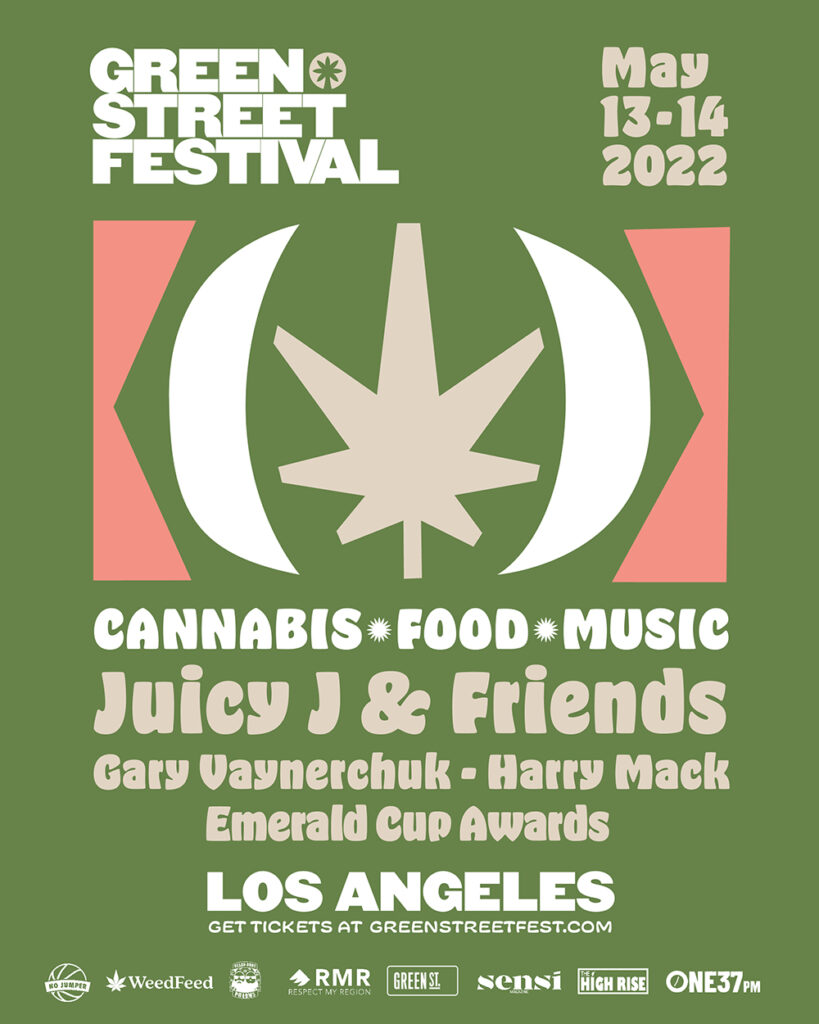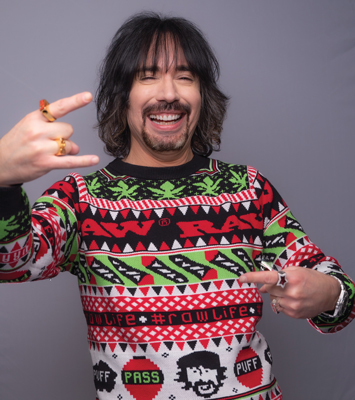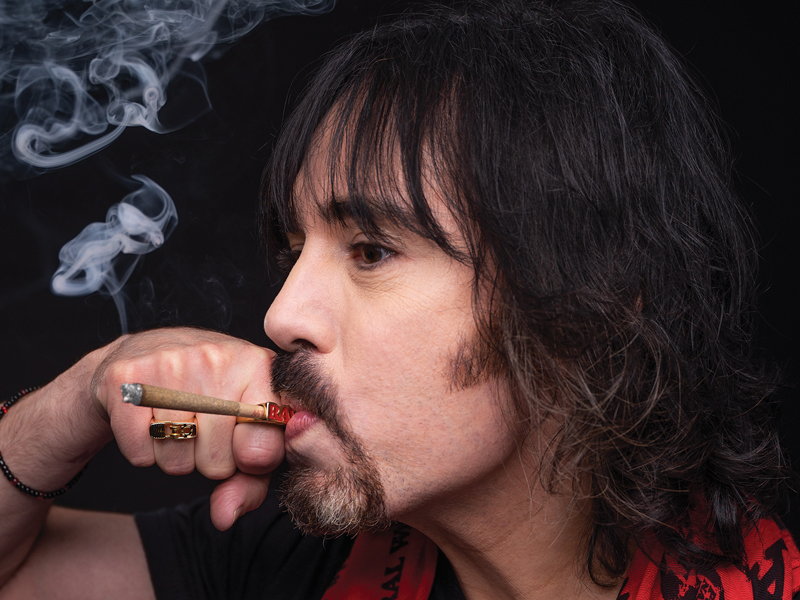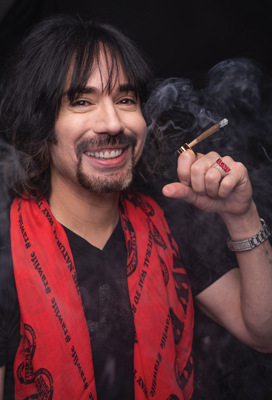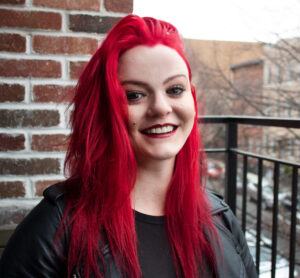When you first think of RAW rolling papers you might think of a natural and more sustainable rolling paper that has organically grown into a worldwide brand. But, when you peel the layers back, you realize that the brand and the attitude of the company is a direct reflection of its leadership and more specifically Josh Kesselman.
Since starting RAW officially, Kesselman has amassed a massive social media following and has become a true steward to the planet, while being entertaining as hell.
His rolling papers are made from natural hemp fibers and don’t contain chemical whiteners like other brands, but that is just the beginning of his story.
He walks the walk and talks the talk when it comes to sustainability and not wanting to “piss acid on the planet.” He is vegan. He gives millions to charities and feels guilty that he isn’t doing enough.
But when you look deeper, it’s not just his customers and the planet that he cares about. It’s the people in his life that he prioritizes and makes the focus of his passion.
He takes care of his employees and even paid people to stay home during the pandemic.
He takes calls from his daughter in the middle of an interview; as any dad should. And he gets emotional when he talks about making the world a better place and genuinely loving people.
So sit back and relax. Maybe grab a beverage or roll your favorite smoke and enjoy this fascinating conversation with one of the true enigmas and innovators of the cannabis industry known for his papers of hemp and heart of gold.
Cannabis & Tech Today: You started collecting rolling papers when you were a younger man, inspired by your father’s interest in paper. At what point did you realize you had a real authentic brand with RAW, and not just a business or a passion?
Josh Kesselman: Wow. No one’s ever asked that before. It’s a tough one … I was out at a club with some friends and the server suddenly turned to me and said, “Oh my God, you make Juicy Jay’s? I love those!” Now that’s 2000, 2001, somewhere around there. So, that’s the first time when I realized that maybe I have a brand — people actually recognized the product.
C&T Today: Your brand was based around sustainability before it was even cool. What does that word mean to you and why do you think cannabis was late to the party with sustainability?
Josh Kesselman: Cannabis still is late to the party. It really is. That part really hurts me … I just don’t want to leave the planet worse than I got it. It’s just the way that I think, which is you’re trying not to take more than you give. RAW wasn’t a product I was making for the masses. I was picturing my friends and my friend’s girlfriend. She was this blonde girl with hippy dreads and I was trying to make a product they would really love. They were the headiest smokers I knew. [They] knew every aspect of it. I wanted to make a paper for them that I could just picture them connecting with and truly loving, to fit within their way of living. That’s what RAW was really about.
C&T Today: There’s so much fakeness out there on social media. Your authenticity, I think people gravitate towards it. Can you talk a little bit about your social following and what it means to you?
Josh Kesselman: I freaking love having such a strong social media following.
When I go outside and walk down the block and someone recognizes me and they come to me like, “Oh my God, your videos changed my life. They made me so happy.” You know how happy that makes me?
I went to listen to a TED Talk about some guy saying we should get rid of money and basically replace it with happiness points.
Did you make people happy? Did you uplift? I was like, “Oh my God, that would be epic.” Because that’s something I would strive for.
Social media means a lot to me. I want to be able to talk to people.
I want to be able to get positive messages out in the world and uplift them, because I know that when I go, the only thing left behind that anyone will remember me by are those social media videos.
C&T Today: So, would you say you’re a tech guy?
Josh Kesselman: I love tech because it makes things better. But I also watch very carefully, just like with our products, I’m looking for evolution not devolution.
I hate it when I witness devolution. I’ll give you an example. That microphone I use for my phone, the older generation of it was a simple cordless mic.
They made this great cordless mic. It was great.
I bought three of them. They came out with a new version. The new version was not as good.
It was smaller, used different channels, but it was truly not as good to the point where I was like, “Is this just me, or is everyone hearing a hiss?” “We’re all hearing a hiss.” Okay, let’s switch out the mic.
Nope. Still hearing a hiss. Back to the old one.
Two years later, they came out with another new one. Again, not as good as the original.
And you’re like, “Okay, who’s running this company? Are you guys using your own products? Who’s fucking this up? How can you not notice that your old ones are so much better than your new ones? And it isn’t like you’re charging less. So, what’s going on here?”
I run into this often with products. I judge products very harshly.
C&T Today: Do you like toys? Cars, motorcycles, things like that?
Josh Kesselman: I’m glad you asked. When I was a kid, we didn’t grow up with much money, but one day someone gave me a toy Magnum PI Ferrari.
I thought it was the coolest thing to add to my collection of toy cars … I never thought I’d get to a space where I could afford a Ferrari.
Years later, I got the money under the belt, the whole thing, so you’re living the dream. You go and you buy yourself
that Ferrari.
I got the Ferrari, I get in and I’m driving and I can’t forget thinking to myself, “This would’ve been so cool when I was 17. Fuck.”
Then when COVID hit, I took the Ferrari out for a quick drive and I felt like a douchebag. I was like, “I got friends out there that are losing their jobs, that are really in trouble, and I’m out here driving a Ferrari.”
So, I sent it to the dealership and said, “Guys, I can’t do this anymore. I don’t want to drive this. It’s not making me happy.” You know what I have fun in? I have fun in my Prius.
We wrapped it, we made it color changing. I did rims on it. My Prius is badass. And now, because my daughter took my badass Prius — Coco, it’s okay. I love you. But because she took my Prius, I got a Tesla.
The coolest thing about the Tesla is the technology. Especially if you’re tired and you’re driving, it has an autopilot that keeps me in the lane and it makes me feel better and safer and I don’t get all paranoid when I’m driving.
That made me so happy. It actually made me happier.
C&T Today: How do you feel the cannabis industry views you as an influencer?
Josh Kesselman: Well, I think they all think I’m crazy, which I am. I think we all are. You have to be, to be me …
I think the industry appreciates how far I’ve brought it and how passionate I am about what I do. I think they look up to me in that regard as to being like, “Wow, he really brought it, man.”
The reason I can talk so quick and strong about my products is because I love them and I enjoy making them, and we invent them together, me and the team.
So, you really care about it and you really like it and you get excited about it. I think they look at me as someone who really brought my part of the industry to the highest level it’s ever been.
C&T Today: Nobody’s going to say that you don’t love what you do. Let’s talk about pre-rolls. How has the explosive popularity of pre-rolls affected how RAW operates?
Josh Kesselman: It has affected us a lot in terms of our cone business. We have to make so many cones for them, and we can never make enough …
There’s lots of testing involved, a lot of production. But in the end, I believe our cones are the best there are.
I’ve seen lots of people try to find ways to make them cheaper and easier — like spiral wrapping, which makes them, in my experience, burn wonky. Not terrible, just not as good as a normal cone.
And I’ve experienced so much corner cutting that we refuse to do.
But in addition, one thing that drives me crazy with pre-rolls is that the overwhelming majority are not filled properly. It’s an uneven experience.
I’ve been to LA and bought some pre-rolls, we’d light it up and you can’t even draw from it. Or then you light one up and it just completely runs. It’s a shitty, uneven experience. You don’t know what you’re going to get.
I think a lot of people making pre-rolls don’t truly understand where the cone comes from and understand how to fill the cone. They don’t have enough experience.
They see a cylinder and the mindset is, “How can we fill this?” Without a thought process of, “How can I make it burn better? What’s the best way to fill this? How can I make an actual burn closer to what people get when they fill it correctly themselves?”
C&T Today: You’re a perfectionist. You are an enigmatic, lovable entrepreneur, and you also are really big into giving. Can you talk about RAW Giving?
Josh Kesselman: Yes, I can. The problem for me with RAW Giving — let me start just from my own shame — is that I don’t believe I give back anywhere near enough …
Once you start getting blessed with tremendous success, well, with that success comes great responsibility.
I believe that whenever you receive a huge reward, like tremendous success, you then have to stop and listen. The universe is talking to you all the time, you just don’t hear it. And many people are deaf to it.
I would just try to open myself up to say, “Okay, what is wanted? What am I supposed to do? Because I know when you receive, you’re supposed to give. What am I supposed to give?”
And one way or another, the universe would guide me on these incredible journeys where I would end up through just sheer happenstance in what I call the gates of hell, which was going through the gates of Mother Teresa’s Hospital for the Destitute and Dying in Addis Ababa, Ethiopia.
You go through that experience, witnessing people dying in front of you, and you’re experiencing something that you never thought you would actually experience, to the point where you have to go into what’s called “warrior mode.”
Warrior mode is, you have to turn off all your emotion and just function. Your job today is to take these dead people, the person who has passed away, onto this gurney. Other people are going to take the gurney away.
Your job is to take them off the bed, the next person comes and you put them on that same bed, without changing the sheets, so that they can die on that same bed.
This is what you’re doing for the next few hours, Josh. Just do it. Don’t think. Don’t say a word, because if you think one word — you’re gone, man.
Suddenly you realize, maybe there’s a way you could help, and maybe there’s a way you can make this better. That sort of mentality, that experience there, led me to learn they had a water problem.
They couldn’t wash the sheets. They didn’t have water to wash the patients. They just had enough water to drink.
So, we did a water project with them … It turned out they had a real problem that needed to be solved with some tech and ingenuity and we were able to pull it off. The impact I got to witness with that project was tremendous.
When I started really giving back, the universe spoke to me through a friend of mine … I went and had a sit down with Bryan Adams to ask him, “Bryan, I know you give back. You’ve got the Bryan Adams Foundation and all this stuff. What should I do?”
He said “Josh, you’re not going to believe this, but I have a website I was going to use called RAW Foundation. We should use it to give back. That led me down a really cool journey, now called RAW Giving, which is not a 501©(3). We don’t take money from anyone, we just give from the heart.”
The plan was to continue to give back, not take money from anybody to the extent possible, and just try to inspire and uplift people through sharing with them the feeling of giving.
Because when you give back, you get this incredible warm feeling. It’s programmed into our human DNA. Everybody gets it. You just have to trigger it. It’s addictive, because it feels so good when you help people.
So, the plan was essentially to give back in what I believe is an incorruptible way. Where it’s like, “Hey man, you come onto RAWgiving.com. You want to buy a skateboard, or a snowboard, or whatever cool stuff we got on there. 100% of what you spend goes directly to the charity.
“We don’t even take off the cost of goods or anything like that. Blah, blah, shipping, blah, blah, blah. Nope. You just make a donation to Wine to Water, one of our really close friends, for let’s say a hundred bucks, and then you get this thing. I send it to you for free, man. I even sign it if you want me to. Here it is.”
Why are we doing this? I’m not gaining anything from this, except I’m doing the right thing. I’m helping you get that feeling of, you just gave a hundred bucks to Wine to Water. You know what that just did, man? You just saved a human life. You just saved a life. Here’s a signed tray. Thank you.
We’re trying to create a movement, a philosophy, something that’s real, that feels so good to them that they get addicted to it the way that I am, and that they give back too.
C&T Today: Where do you see the cannabis industry in five years?
Josh Kesselman: I believe we’ll have some form of federal legalization that’ll make more cannabis legal than the type that’s already legal. I believe that strongly.
I hope that the industry somehow remains as fractionated as possible. I don’t want there to be any big players. I want there to be a zillion small players, so that humans really have a chance to succeed.
[I’d like to] keep it small and keep it where we don’t have to work for each other, but we all just work for ourselves — entrepreneurship can take root and do its thing.
That’s what I would love to see more than anything. I’m scared we’re not going to get there, because the people that are putting money in the politician’s pockets are not the small farmers, it’s the big ones.
C&T Today: You have a lot of empathy, clearly, and I believe empathy is a superpower. Where do you see yourself in five years, and what brings you hope?
Josh Kesselman: I don’t think I’m going to change much over the next five. I’d like to believe that I will.
I know I’ll get better at everything. I’m always learning. I’m always fucking up, always making mistakes, but I try to learn from each one of them. I’m hoping that we’re going to pull off some incredible RAW pre-rolls that are going to help people experience it in a better way.
I want to be more of an advocate … Someone who, either through our actions or other methods, really helps to elevate the entire industry towards mutual success with a lot of people, rather than king of the mountain …
I create my products through empathy, and everything I do is really very much through empathy. When I smoke with you, I’m trying to understand how to better it.
I’m trying to understand your needs, trying to think of every little detail of how you roll and how you smoke.
And that’s where the next product comes from and that’s the process of RAW Innovation. If you want to know the big secret, I’ve had companies sue me trying to get to our secrets, it’s trying to figure out how I can make it better for you.
Not doing it through a fake way, “What can we do to make it better for this group of testers?” No, you got to hang out and session with somebody. You got to really hang out and chill and understand them and connect with them.
And you can’t do that in a panel. It’s got to be done through your friends and just people, humans.
C&T Today: Josh, it’s been a pleasure. I think our audience is going to get a deeper understanding of what’s behind RAW and —
Josh Kesselman: I don’t want them to have a better understanding of what’s behind RAW.
I want them to ideally, if you came this far, I’m hoping that I helped you. I’m hoping that I helped the reader.
I’m hoping that somehow, even if it’s just a little bit, I elevated you or caused you to do something that betters the world in some awesome way.
C&T Today: Well, to everybody reading, let us know. Let us know and we will let Josh know if you felt elevated, if you felt touched, and if you felt inspired from this interview.
This article first appeared in the fall 2021 issue of Cannabis & Tech Today. Read the full issue here.
Photos by Michael Rodriguez/RandomLyfe
Via
https://cannatechtoday.com/rolling-with-the-best-raw-founder-josh-kesselman/
